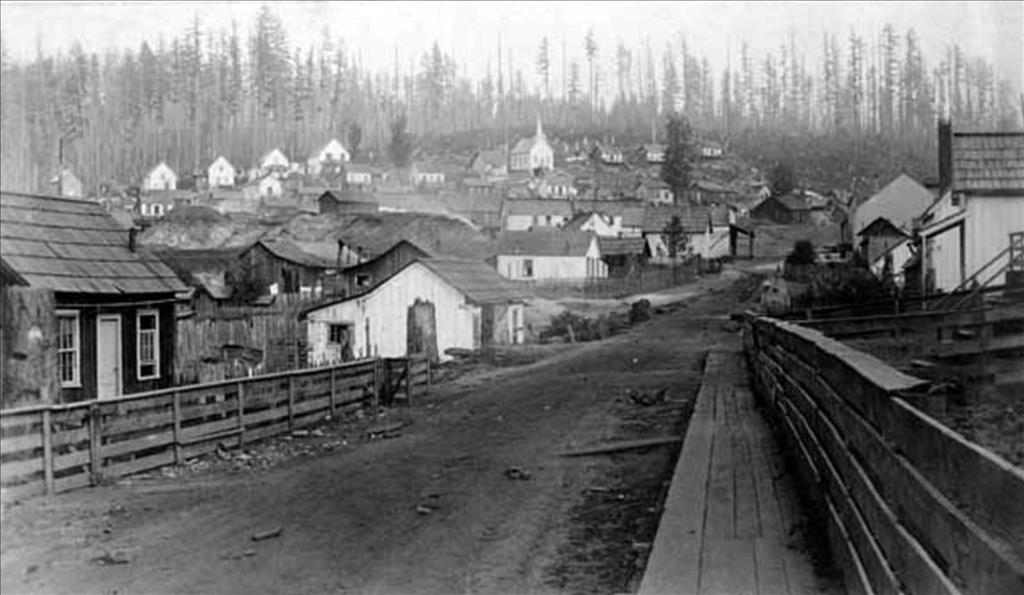King County, Washington, which includes the Queen City (now called “Emerald City”) of Seattle, was established on December 22, 1852, before the creation of Washinton Territory. The county was named for United States Vice-President-Elect William R. King, who died before his inauguration. The county’s name today honors the 1960s civil rights leader, Dr. Martin Luther King, Jr.

The area known as King County had long been familiar to Hudson’s Bay trappers and other Euro-American explorers. Its true “discovery” however, occurred after passage of the Federal Donation Land Act of 1850. That unique legislation “gave” western lands to Americans who would occupy and improve those tracts over a period of five years. John C. Holgate, Arthur Denny, Luther Collins, Henry Van Asselt, Jacob Mapel, and others arrived to stake their claims in 1850-1852.
The first of these brave settlers in future King County was likely John C. Holgate. He arrived from “the east,” traveling down the Duwamish River and settling on the shores of Elliott Bay. Others would stake claims along the Duwamish and the nearby fertile White River Valley. The well-known Seattle founders, David “Doc” Maynard, A.A. Denny, John Low, C.D. Boren, and W.N. Bell arrived by sea and settled first at Alki Point (West Seattle), then near Holgate’s cabin on Elliott Bay. Pioneer families were attracted by the temperate climate, deep harbor, and rich soil.
As communities grew, a unique transportation system was introduced, the “Mosquito Fleet.” Those small steamboats shuttled across Puget Sound, up and down navigable rivers, and around the many lakes. Except for an occasional, thrilling boiler explosion, the little steamers were reliable and stimulated commerce, the growth of local government and a burgeoning social life. Puget Sound and the rivers were the highways of that day.
In 1855 King County had a scare. Resident Natives felt cheated by the treaties they had been forced to sign, resulting in skirmishes and “misunderstandings” between the Native and “visitor” groups. At one point many White Valley residents fled to the bayside village of Seattle. In October, 1855, among those who remained in their cabins, nine were killed by Natives. Fort Dent, built on the White River, offered little protection. Within two years the “Indian problem” had evaporated: the Native population had been decimated and overwhelmed.
In 1893 a regional historian with a penchant for hyperbole described King County as “mildly mountainous on its eastern border, the county kisses the Sound, with gentler pine-clad hills and sandy beaches on its eastern boundary . . . it is emphatically one of the great, if not the greatest, counties of the Northwest . . .”
The same writer noted in 1893 that, aside from Seattle, the principal towns in King County were Squawk Valley (today’s Issaquah), Houghton (since disappeared next to Kirkland), Newcastle (a former coal mining community near Renton), and Snoqualmie.
Discover more from Post Alley
Subscribe to get the latest posts sent to your email.

Thanks for more regional history Junius. It’s worth noting that King County’s original namesake, William Rufus de Vane King (1786-1853), owned a large cotton plantation near Selma, Alabama, and enslaved an estimated 500 human beings. The renaming of the county for Dr King went little noticed in 1986 but controversy flared for several years in early 2000s about changing the county logo from a crown to Dr King’s image. Larry Gossett was at the forefront of eventually winning approval of a design bearing the likeness of the champion for civil rights. Readers can find a detailed article on the renaming of King County on the History Link site. https://www.historylink.org/File/11261
Interesting history.
Thank you for the map, which shows the original county’s southern border crept very close to Tacoma.
Pierce County was also established in 1852 by the Oregon Territorial Legislature.
It looks like Thurston came first, in January 1852. Then Pierce and King in December, on the same day.
Would have been great fun to listen to the county creators decide what would be King and what would be Pierce. Must have been quite a debate.